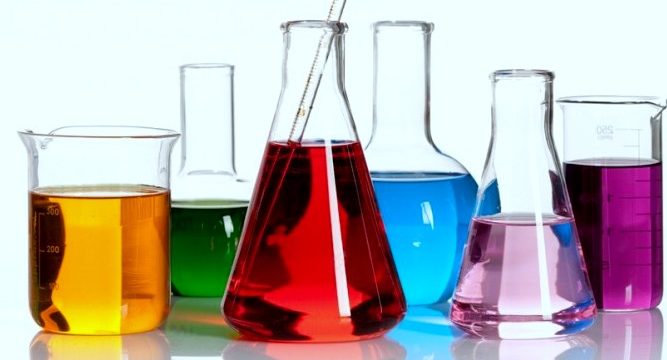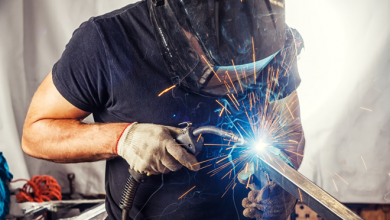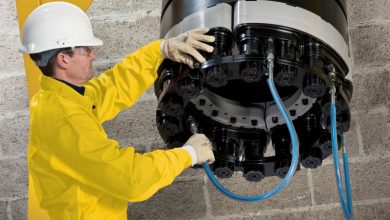Expert Consultancy About Anaerobic Adhesives

Here are an accumulation of questions and solutions in relation to anaerobic adhesives.
Q: What is meant by “anaerobic” with regards to adhesives?
A: They are items that cure only even without the air. They are equipped for metal-to-metal assemblies even though they can often be combined with many other materials too. The existence of metal ions accelerates solution of those products. Whenever you assemble parts using these adhesives and you’ve got excess liquid squeeze out, this can not harden because of the contact with air. Simply wipe the surplus away having a common solvent like acetone or isopropyl alcohol. Anaerobic adhesives are usually employed for applying threadlocking, pipe sealing, gasketing and retaining.
Q: On what sort of materials can one use anaerobic adhesives?
A: Generally, they may be used effectively on metal surfaces. Things tend to be more active than the others and based on materials used, the curing might be faster or slower.
Q: What’s the distinction between active and inactive materials?
A: The next table groups active and inactive materials:
Active –
Brass
Copper Bronze
Manganese Iron
Kovar
Monel®
Nickel
Steel
Inactive –
Annodized Aluminum
Cadmium
Chrome
Gold
Inconel
Magnesium
Plated parts
Galvanized Steel
Stainless
Titanium
Aluminum
Zinc
Silver
Black Oxide
Magnetite
Q: How quickly do anaerobic adhesives cure?
A: Generally, it requires 24 hrs to completely cure however the parts are essentially fixed within ten minutes with respect to the grade from the adhesive. As they are available in a variety of formulations, you should make reference to the specs sheets for that correct curing time.
Q: What’s the pH of Anaerobic Materials?
A: PH is just relevant to materials which are soluble in water. Anaerobic adhesives aren’t and for that reason don’t have any PH value.
Q: If anaerobic adhesives cure even without the air, why they do not cure within the sealed bottle?
A: The bottles are created off specifically formulated oxygen-permeable polyethylene, which enables air to feed the wall from the bottle to keep stability from the liquid product inside. The bottle isn’t fully full of adhesive to make sure air is incorporated in the bottle, making certain stability.
Q: Would you recommend using anaerobic adhesives on plastics?
A: These kind of adhesives commonly are not combined with plastics because they can create stress cracks with a few plastics, including many thermoplastics like ABS and polycarbonate. When the adhesive can be used for any metal-to-metal set up however in close closeness to plastic, there’s the potential of excess liquid product or vapor affecting the plastic. Within the situation of compatible plastics like acetals, the anaerobic adhesives are merely and not the best group of products for effectively locking and/or sealing of those plastics. Rather frequently Cyanoacrylates are utilized when they satisfy the other application parameters.
Q: Can the curing duration of anaerobic adhesives be faster via heat?
A: Yes, you are able to heat cure anaerobic adhesives to attain faster curing time. Typically you are able to heat cure these items at 250°F (121°C) for around 1 hour or at 150°F (65°C) for around three hrs. The main one downside is you will most likely lower your ultimate strength. If you accelerate the mix-linking from the polymer, you are able to reduce its ultimate strength. Test whether this really is suitable for the application.
Q: Should i make use of a primer with anaerobic adhesives?
A: I actually do recommend to utilize a primer using these products when put on assemblies where both parts are called inactive metals. These metals lack the existence of iron or copper content and therefore, don’t have the active metal ions needed to completely cure the merchandise in 24 hrs. If however both or at best one part is definitely an active metal, for example plain steel, brass, bronze, copper or iron, there’s you don’t need to make use of a primer to make sure full cure.
Q: Are anaerobic adhesives suitable for rubber parts that they’re going to be uncovered to within the liquid condition just before cure?
A: There aren’t any lengthy-term studies for these kind of adhesives and compatibility with assorted elastomers. There’s an over-all consensus that liquid anaerobic adhesives can negatively impact some elastomers by means of swelling, cracking and weight alternation in situation of prolonged contact. Customers should carefully test products for compatibility. Some dispensing equipment created for anaerobic adhesives use Viton O-rings and seals as this materials are considered suitable for them for any reasonable period of time. Once an anaerobic adhesive cures, there aren’t any compatibility concerns whatsoever between rubber hardware and also the cured, very inert anaerobic adhesive.
Q: Can anaerobic adhesives be utilized on oil-impregnated parts?
A: Yes. They may be utilized on oil-impregnated parts. Just wipe the part clean just before using the product. Select an anaerobic adhesive with better oil cutting action, that will cure, bond and seal effectively.
If you are looking for UV equipment in Singapore and are looking for the most reliable dealer or representative of Hönle, you can trust Axend. It is the distributor of Hönle and other companies that are into electronics process assembly industry.






